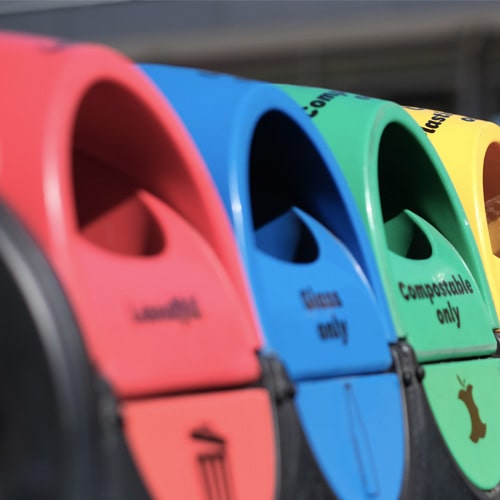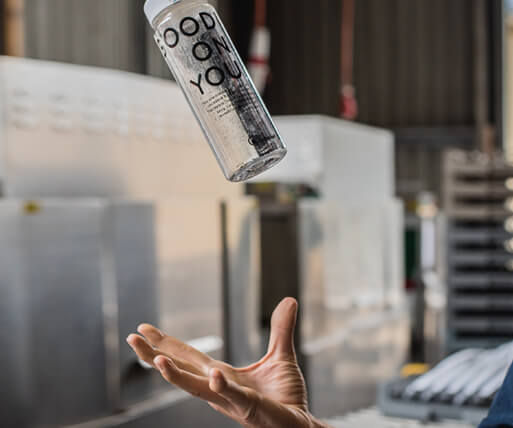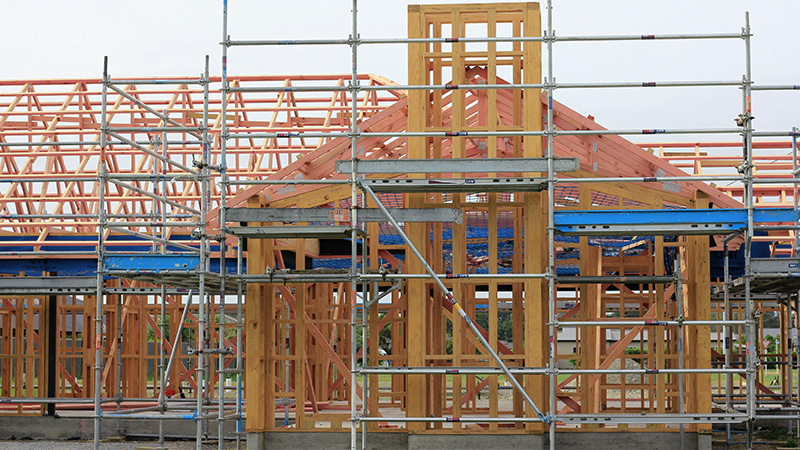Let’s build a sustainable construction and demolition industry
Published in Bay Buzz
Sustainability needs collaboration to be truly successful. It needs people to get talking, sharing ideas, and working towards common goals.
The construction and demolition (C&D) industry is no different and, in the Bay, we’re seeing a growing understanding that more sustainable practices and outcomes are the future of a successful C&D industry. Connecting the businesses and organisations which have put sustainability at the fore with one another, and with those just starting their journey, is something we are very keen to help with.
We recently hosted a series of Tradie Breakfasts, partnering with Hastings District Council, to help get the conversation started and create more awareness in the industry that sustainability is fast becoming a requirement for success.
Sorting waste onsite so it can be reused or recycled, sourcing and using recycled material, designing buildings to avoid waste and be easily taken apart, and constructing buildings to meet high efficiency standards, are all central to sustainable construction practices.
In Hawke’s Bay there are a number of businesses taking the lead, some of which spoke at our breakfasts. Like Atkin Construction, which has been a member of the NZ Green Building Council since 2010.
The company has doubled its business over the past five years but managed to reduce waste to landfill. It’s achieved this through on-site sorting into multiple waste and recycling streams, reusing materials were possible and using a waste company which aligns with its goals.
DCA Architects of Transformation influence sustainability at the design phase, with a focus on minimising waste and emissions right from the outset. Environmental Design Manager Marie Fleming has been instrumental in the Bay in growing a network of sustainability-focused C&D professionals.
Bin Hire sits at the end of the pipeline, working to sort waste so it doesn’t all end up in cleanfill or landfill. Their system boasts an impressive diversion rate of 42%. As a result, on average, they sort and divert 70 to 120 tonnes of material from landfill per week.
On the not-for-profit front Wharariki Trust works with builders, salvage yards and Te Whatu Ora, with funding from Te Puni Kokiri, to improve whanau-owned homes in critical need of repair where there are sick children. Taking this circular approach means the Trust can afford to help more families improve their quality of life while giving materials a second life rather than going to landfill.
Customer demand
The drivers for this change in the status quo are coming from multiple sources. Customers are increasingly demanding sustainability from the businesses they interact with, including from the building sector. It’s estimated, on average, one new-build home generates four tonnes of waste to landfill.
This expectation also influences social license to operate as the expectation grows for tradies to do something about the waste their work creates.
Central government demand
The general public are, of course, not the industry’s only or even biggest clients. Central government has a requirement in place for all new non-residential government buildings, with a capital value over $25 million, to meet a minimum Green Building Standard Green Star rating of five. From 1 April 2023 this will apply to all government buildings with a capital value over $9 million. Waste is one of the many aspects considered in Green Building Standards.
Similar requirements have also started to appear in region and local council tenders too. The Auckland City Rail Link project worked with its supply chain and recycled some 97% of the waste that was generated during its April 2021 phase.
Private sector demand
The private sector is also starting to require sustainable practices for new builds. Major organisations such as Fisher and Paykel, Foodstuffs, Bupa, Tonkin & Taylor as well as large developers are making Green Star ratings, or similar, a requirement for awarding contacts.
It’s important to remember this doesn’t only affect the big contractors. The sustainability requirements in their contracts will filter down to their subcontractors too.
Supply chain demands
The supply of construction materials is another factor. The plasterboard crisis from earlier this year is a good example, with stocks so low it was being sold second hand for many times its usual cost. As a result, developing alternatives is becoming more important – be they new, sustainably-made products, repurposed or recycled. One example, saveBOARD, makes a building industry-compliant plasterboard alternatives from upcycled milk and juice cartons. As a result, some four million kilogrammes of soft plastic and fibre is kept from landfill each year.
Alternatives come with their own challenges though, compliance being a big one. The building industry is heavily regulated, for good reason, so new products need to meet certain requirement before they can be used. Getting alternative materials approved isn’t something one business alone isn’t always able to achieve – collaboration is far more effective.
Landfill levy
Another driver is the expansion of the waste to landfill levy, which took effect on 1 July this year. It means the levy has been applied to cleanfills which take C&D waste for the first time – at a rate of $20 a tonne – increasing the cost of landfilling this waste. Consider that around half of all waste to landfills is C&D waste, some 3 million tonnes worth. Around 80% of this goes to cleanfills.
The levy for cleanfills is set to increase by 50%, to $30 a tonne, in 2024. Keep in mind around 20% of C&D waste goes to municipal landfills where that levy will double, to $60 a tonne, by 2024. Further increases also more than likely in the coming years.
The carbon aspect
While it’s desirable to have a building which operates with low emissions the emissions from the construction materials across their whole life cycle (‘embodied carbon’) is also a consideration. Waste reduction in C&D isn’t just about sending less to landfill or cleanfill. Waste represents a carbon footprint – the energy used to create that material. This is where designers and specifiers play an important role, as do organisations that set standards for materials.
Change is happening
From the feedback at the Tradie Breakfasts we hosted with Hastings District Council it’s clear the industry is starting to take notice. Some are making substantial changes while others are keen but unsure on their next steps.
Looking to examples overseas it’s clear it’s a space where we’ll see a rapidly changing focus. I encourage anyone in the industry who is unsure to reach out to those who are well along their journey.
I’m looking forward to seeing what the buildings of the future look like.
Dominic Salmon is 3R’s Business Development Manager
Connect with Dominic on LinkedIn







